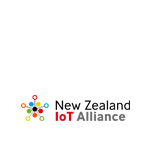The NZ 2019 IoT Half-Day Conference, sponsored by Spark and LEAP Australia, on 3 October in Auckland showcased many examples of New Zealand IoT solutions and gave the 120 attendees the chance to gain insight from those who deployed them.
Smart City and Industry4.0 were the themes of the event, with each category detailing a broad mix of case studies.
Jannat Maqbool from the Smart Hamilton team and Singapore’s Ecosystm introduced the first session on Smart Cities with examples of the benefits to society of a smart city strategy.
Adam O’Connor opened the presentations with a detailed review of the implementation of LED street lights for South Waikato District Council. This set a trend that would be echoed through subsequent presentations of readily apparent return on investment business cases, clear non-monetary benefits that deliver on organisation purpose, and occasionally surprising insights from data analytics that create long lasting value.
BeSure, presented by Matt Hector-Taylor, showed how relatively simple and unobtrusive sensors coupled with artificial intelligence analytics, will enable vulnerable people to live more independently and at lower cost of service delivery, but without compromising quality of care.
Ilya Vensky of O2O2 wowed the room with the smart Facewear technology that uses unique air filtering to ensure city dwellers can breath healthy in polluted atmospheres. By using a connected system the data generated provides insights for city and health managers to improve livability for all the population. There is a remarkable roadmap from O2O2 with many different applications of their technology.
LEAP Australia, the event silver sponsor, showed the results from a recent hackathon at University of Auckland. Kevin Marret explained how students used IoT and Augmented Reality technologies to address a variety of real-world situations. It was invigorating to hear from the students about how they were able to rapidly produce working prototypes and demonstrate new ways of collecting and presenting data to create meaningful results.
Angelique Grieve from SAS introduced the Industry 4.0 session with an outline of how data analytics enables efficiency and opportunity.
Darren Wilkinson from LMAC presented an industrial example where factory process data was used to optimise and reconfigure an electronics production line. Again using AI methods LMAC generated a 37 percent improvement in production line throughput without any additional capital investment.
KotahiNet have created a world first monitoring system for Transpower, the national grid power operator. Vikram Kumar explained how IoT is used to report on the height of power lines and warn if the distance above ground is risking safety margins. AI is used to analyse the influence of air temperature, power flows and other factors so that Transpower can create better predictions of power flows. The end result is safer operation, lower running costs and using the greater use of the lowest cost generation stations.
Brett O’Donnell from Ento also had an electric utility use case, but this time for a distribution utility concerned with aging power poles. Ento deployed sensors that monitor pole lean and warn of a risk of falling over. A key concern where poles are aging and there have been safety incidents. Similar to KothiNet, this application also needed low cost, battery powered wireless sensors that would last many years without maintenance.
Andy Grant from ASG Technologies advocated using an agile approach to projects. Innovation is inherently a risky process, but by collaborating with knowledgeable and trusted partners it is practical to apply new technology. An agile and iterative approach has enabled infrastructure organisations to learn how IoT can be applied to improve asset performance, reduce operational costs, and enhance staff and public safety.
The event closed with a lively speech from Melissa Lee, National MP and spokesperson for Broadcasting, Communications and Digital Media, and Ethnic Communities. Ms Lee committed to a strategy for AI and commented on the importance of broadband networks for an efficient and innovative economy. If National return after the next election Lee will also look at the need for a national Chief Technology Officer position and asked the audience for views on what the CTO role would be a champion for.
Common threads in the presentations were that technology readiness for scale is well developed with lower costs than anticipated, but the project process can be uncertain. Return on investment for projects seemed to be clear, but an agile plan was needed so that scope and development was focussed on tangible benefits to the client or public. Critical in most cases was a close engagement with the client throughout a project so that uncertainty and risk was understood equally and managed as a partnership.
From a technology point of view, many examples also used artificial intelligence to create value from data. IoT is not just about the ‘thing’, but rather the outcomes and insights generated that benefit organisations and the public.
The IoT Half-Day Conference created gave the attendees the chance to create and strength relationships with the key players in the New Zealand IoT community. While last year’s event focused more on startups and the proof of concept stage, this year’s event focused on deployed examples of IoT and Industry4.0 that were generating tangible benefits and value. This underlines the progress that organisations are making with technology that is proven to be ready for scale up and the innovation process being well understood for real world challenges.
View photos from the event here.






